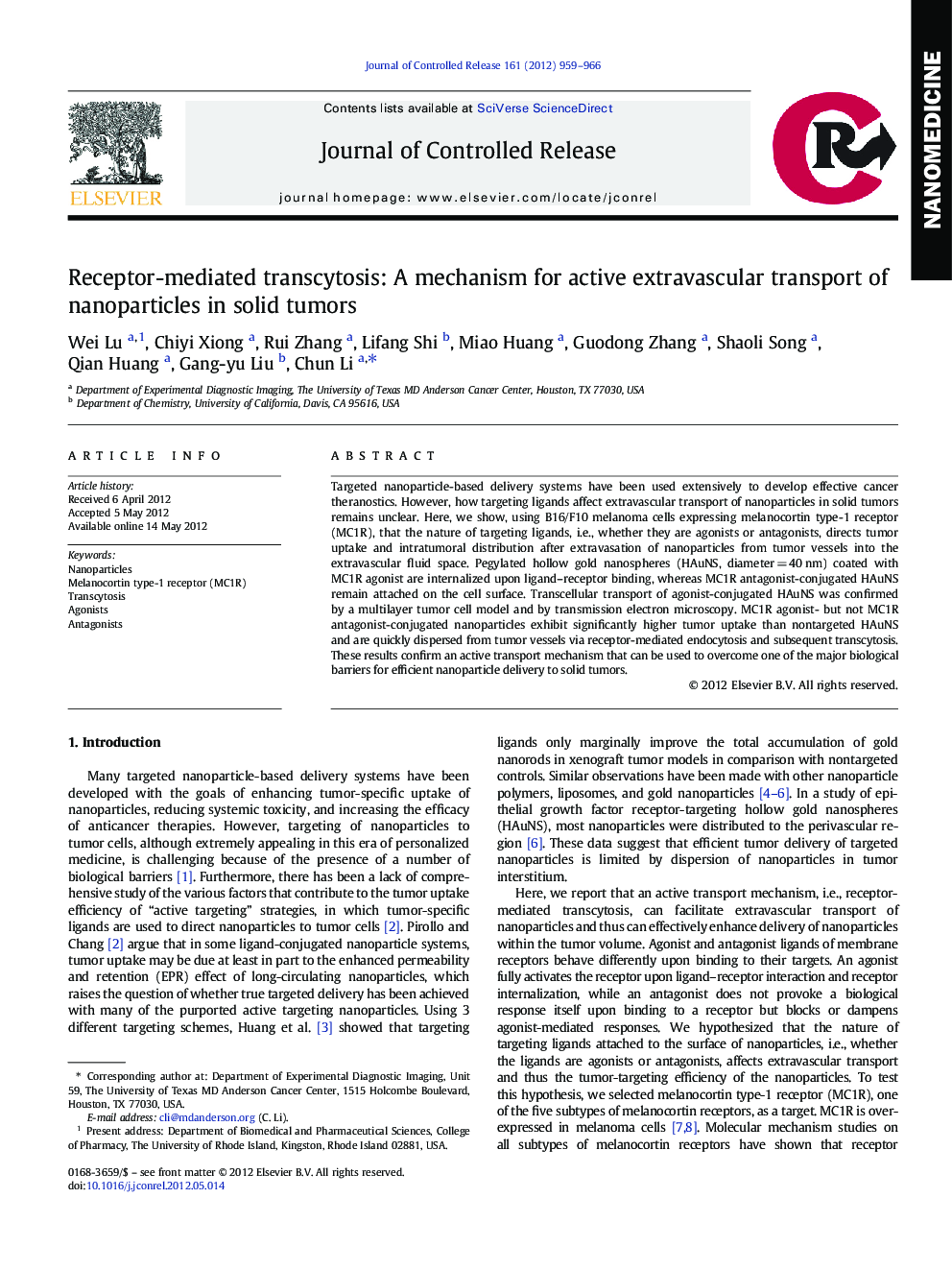| Article ID | Journal | Published Year | Pages | File Type |
|---|---|---|---|---|
| 1424338 | Journal of Controlled Release | 2012 | 8 Pages |
Targeted nanoparticle-based delivery systems have been used extensively to develop effective cancer theranostics. However, how targeting ligands affect extravascular transport of nanoparticles in solid tumors remains unclear. Here, we show, using B16/F10 melanoma cells expressing melanocortin type-1 receptor (MC1R), that the nature of targeting ligands, i.e., whether they are agonists or antagonists, directs tumor uptake and intratumoral distribution after extravasation of nanoparticles from tumor vessels into the extravascular fluid space. Pegylated hollow gold nanospheres (HAuNS, diameter = 40 nm) coated with MC1R agonist are internalized upon ligand–receptor binding, whereas MC1R antagonist-conjugated HAuNS remain attached on the cell surface. Transcellular transport of agonist-conjugated HAuNS was confirmed by a multilayer tumor cell model and by transmission electron microscopy. MC1R agonist- but not MC1R antagonist-conjugated nanoparticles exhibit significantly higher tumor uptake than nontargeted HAuNS and are quickly dispersed from tumor vessels via receptor-mediated endocytosis and subsequent transcytosis. These results confirm an active transport mechanism that can be used to overcome one of the major biological barriers for efficient nanoparticle delivery to solid tumors.
Graphical abstractMC1R-mediated transcytosis of nanoparticles in solid tumors is initiated by internalization upon agonist-receptor, but not antagonist-receptor, binding to the tumor cells.Figure optionsDownload full-size imageDownload high-quality image (121 K)Download as PowerPoint slide
